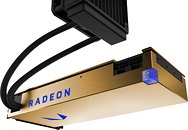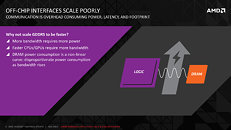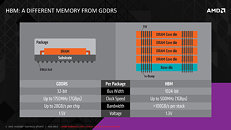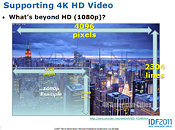Moore Threads Claims 120% Gaming Performance Improvement for MTT S Series GPUs
Moore Threads has released version 290.100 of its MTT S Series Windows desktop driver; today's freshly published patch notes describe "performance and experience optimizations" for multiple modern games titles. Press coverage of the Chinese graphics card manufacturer's hardware portfolio has concentrated mostly on deficiencies, relative to Western offerings. Despite being the first desktop gaming graphics card to arrive with a PCI Express Gen 5 bus interface, Moore Threads' MTT S80 model has consistently struggled to keep up with mainstream competition. Most notably, their current 200 W TDP-rated flagship—packing 4096 "MUSA" cores—trailed behind AMD Radeon iGPUs, according to March 2024 benchmarks.
The latest Moore Threads driver improvements were tested out internally, prior to public release. Patch notes claim that Infinity Nikki (DirectX 12-only) average frame rates "increased by more than 40%." Another DX12 title was benched—Hideo Kojima's Death Stranding: "average frame rate has increased by more than 50%." The largest upgrade was observed when playing A Plague Tale: Requiem; the MTT engineering team claims that average in-game frame rates climbed by more than 120%. We hope that independent outlets will publish results based on their own testing methodologies, in the near future. Going back to September 2023, Moore Threads boasted about driver update 230.40.0.1 producing a 40% gaming performance uplift for MTT S80 and S70 cards. Outside the gaming sphere, Moore Threads has hinted about its MTT S80 GPU being a high achiever with DeepSeek's R1-Distill-Qwen-7B distilled model.
The latest Moore Threads driver improvements were tested out internally, prior to public release. Patch notes claim that Infinity Nikki (DirectX 12-only) average frame rates "increased by more than 40%." Another DX12 title was benched—Hideo Kojima's Death Stranding: "average frame rate has increased by more than 50%." The largest upgrade was observed when playing A Plague Tale: Requiem; the MTT engineering team claims that average in-game frame rates climbed by more than 120%. We hope that independent outlets will publish results based on their own testing methodologies, in the near future. Going back to September 2023, Moore Threads boasted about driver update 230.40.0.1 producing a 40% gaming performance uplift for MTT S80 and S70 cards. Outside the gaming sphere, Moore Threads has hinted about its MTT S80 GPU being a high achiever with DeepSeek's R1-Distill-Qwen-7B distilled model.
































